Home>Furniture>Outdoor Furniture>How To Block The Wind On A Patio
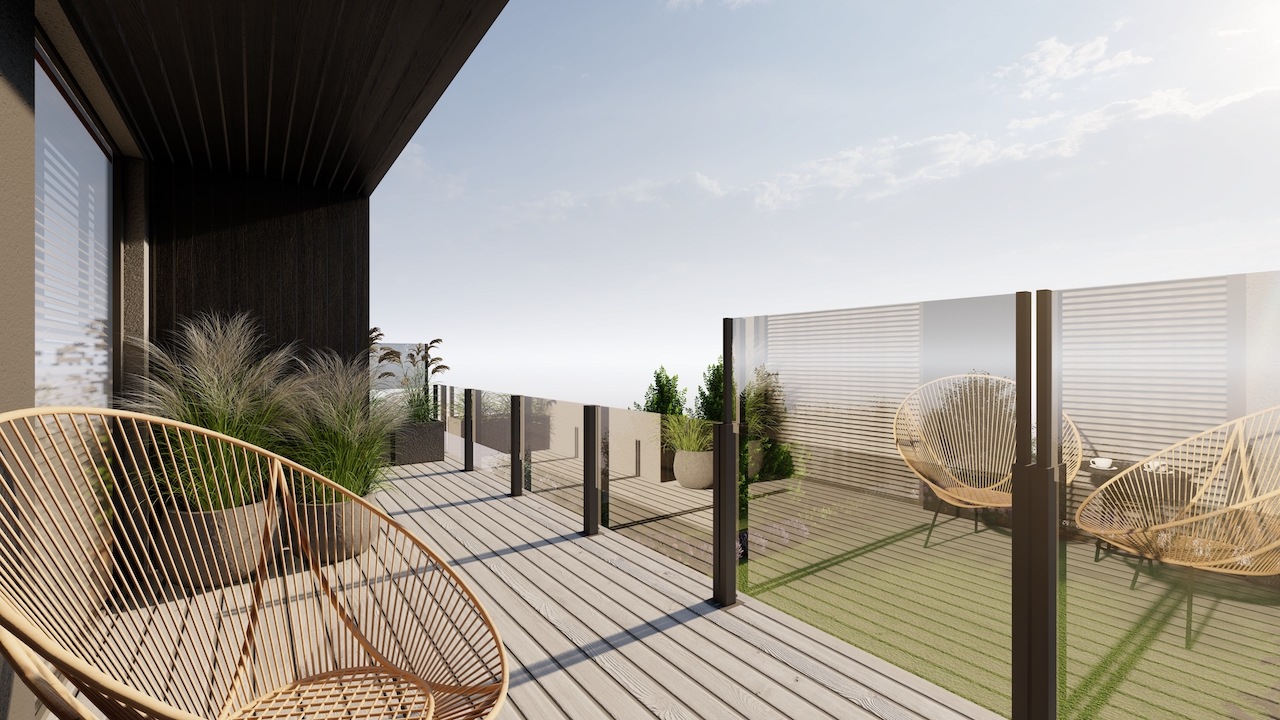

Outdoor Furniture
How To Block The Wind On A Patio
Modified: March 7, 2024
Learn how to effectively block the wind on your patio with our outdoor furniture. Create a cozy and comfortable outdoor space with our tips and tricks.
(Many of the links in this article redirect to a specific reviewed product. Your purchase of these products through affiliate links helps to generate commission for Storables.com, at no extra cost. Learn more)
Introduction
When it comes to creating an inviting and comfortable outdoor space, blocking the wind on a patio is a crucial consideration. Wind can not only disrupt your enjoyment of the patio but also make it difficult to relax and engage in outdoor activities. Blocking the wind not only adds to your comfort but also enhances the functionality and usability of your patio throughout the year.
Having a wind-free patio allows you to enjoy outdoor meals without worrying about gusts blowing away your tablecloth or causing your napkins to take flight. It also provides a peaceful retreat where you can read a book, engage in conversations, or simply soak up nature’s beauty without distraction. Additionally, by reducing wind exposure, you can create a microclimate that enables the growth of delicate plants and prevents dust and debris from accumulating on your patio furniture.
Before you decide on the best method to block the wind, it’s important to consider a few factors. Firstly, assess the direction and intensity of the prevailing winds in your area. This knowledge will help you determine the specific areas of your patio that require wind-blocking measures. Additionally, take into account the size and layout of your patio, as well as your aesthetic preferences and budget constraints.
If you’re looking for affordable and customizable solutions, several do-it-yourself methods can help you block the wind on your patio. These include installing patio windbreakers, using outdoor curtains or blinds, creating a wind-blocking fence, planting wind-resistant shrubs or trees, and building a wind-blocking wall or barrier.
For those seeking more professional and sophisticated options, there are several specialized systems available in the market. These solutions include retractable patio screens, glass windbreak systems, patio enclosures or sunrooms, and motorized patio awnings. These professional solutions offer a higher level of versatility, durability, and aesthetic appeal.
Once you’ve implemented a wind-blocking structure, it’s important to remember to regularly maintain and care for it. This will ensure its longevity and effectiveness in providing a protected and enjoyable outdoor space. Regular cleaning, inspecting for damages, and repairing any wear and tear will help you make the most of your investment.
In this comprehensive guide, we will explore both DIY methods and professional solutions to help you block the wind on your patio effectively. Whether you’re a seasoned DIY enthusiast or prefer to leave it to the professionals, there is a wind-blocking option that suits your needs and preferences. Let’s dive in and discover the best ways to create a calm and inviting patio free from the disturbances of the wind.
Key Takeaways:
- Blocking the wind on your patio is crucial for creating a comfortable outdoor space. DIY and professional solutions offer customizable options to enhance usability and protect your patio from debris.
- Regular maintenance of wind-blocking structures ensures longevity and effectiveness. Cleaning, inspecting for damage, and making necessary repairs or replacements are essential for creating a serene and inviting patio environment.
Read more: How To Block Wind On A Balcony
Importance of Blocking Wind on a Patio
Blocking the wind on a patio is not only about creating a calm and comfortable environment; it also has several practical benefits. Let’s explore why it’s important to invest in wind-blocking measures for your outdoor space:
- Enhanced Comfort: Windy conditions can make it challenging to relax and enjoy your patio. Strong gusts can make it difficult to keep your food and drinks steady, causing spills and messes. By blocking the wind, you can create a more enjoyable and comfortable space where you can fully unwind and truly make the most of your outdoor area.
- Extended Usability: Having a wind-free patio extends its usability throughout the year. Even on breezy days, you can still enjoy outdoor activities, such as hosting barbecues, playing games, or simply lounging in peace. Whether it’s a warm summer day or a cool autumn evening, a wind-blocking structure allows you to make the most of your patio space regardless of the weather conditions.
- Protection from Debris: Wind often carries dust, leaves, and other debris that can easily accumulate on your patio. This not only creates a messy and unattractive outdoor space but can also require frequent cleaning and maintenance. By blocking the wind, you can significantly reduce the amount of debris that enters your patio, making it easier to keep clean and presentable.
- Preservation of Furniture and Decor: Windy conditions can be harsh on patio furniture and decor. Constant exposure to gusts can cause wear and tear, leading to premature damage and deterioration. By blocking the wind, you can prolong the lifespan of your furniture and protect your investment from the elements.
- Cultivating a Microclimate: Blocking the wind on your patio allows you to create a microclimate that is more conducive to the growth of delicate plants. Strong winds can dehydrate plants, inhibit growth, and cause damage to leaves and blossoms. By providing a protected environment, you can cultivate a lush and flourishing garden, enhancing the beauty and tranquility of your outdoor space.
By recognizing the importance of blocking the wind on your patio, you can transform it into a haven where you can comfortably relax and enjoy outdoor activities. Whether you prioritize comfort, usability, or the preservation of your furniture and decor, there are numerous wind-blocking solutions available to meet your specific needs and preferences. In the following sections, we will explore both DIY methods and professional solutions, allowing you to make an informed decision about how to best block the wind on your patio.
Factors to Consider Before Blocking the Wind
Before you embark on blocking the wind on your patio, it’s important to consider a few key factors. These factors will help you determine the most effective and suitable wind-blocking methods for your outdoor space. Let’s take a closer look at what you need to consider:
- Wind Direction and Intensity: Assessing the prevailing wind direction in your area is essential. This will help you identify the specific areas of your patio that are most affected by the wind. Additionally, understand the intensity of the wind in your region. Some areas experience gentle breezes, while others may face strong gusts. The information about wind direction and intensity will guide your decision-making process when selecting the appropriate wind-blocking measures.
- Patio Layout and Size: Consider the layout and size of your patio when choosing wind-blocking methods. If your patio is situated in an open area, it may be more exposed to the wind. On the other hand, if your patio is surrounded by buildings or natural wind barriers, it may require less comprehensive wind-blocking measures. Evaluate the dimensions and shape of your patio to determine the most strategic placement for wind-blocking structures.
- Aesthetic Preferences: Think about the aesthetic appeal you want to achieve in your outdoor space. Wind-blocking structures come in various styles, materials, and designs. Consider the architectural style of your home and the overall theme of your patio when selecting wind-blocking elements. You want to ensure that the wind-blocking structures blend seamlessly with the existing decor and contribute to the visual harmony of your outdoor space.
- Budget Constraints: Your budget will also play a significant role in the wind-blocking methods you choose. DIY solutions such as outdoor curtains or planting wind-resistant shrubs tend to be more budget-friendly compared to professional installations like retractable patio screens or glass windbreak systems. Determine your budget and prioritize your wind-blocking needs to find an option that strikes the right balance between cost-effectiveness and efficiency.
- Local Regulations and Permits: Check your local regulations and homeowners’ association guidelines to ensure compliance when implementing wind-blocking measures. Some areas may have specific restrictions on the height, design, or materials used for patio windbreakers or fences. It’s crucial to obtain any necessary permits or approvals before proceeding with the installation.
By considering these factors before blocking the wind, you can make informed decisions and select the wind-blocking methods that best suit your specific patio requirements. The next sections will explore both do-it-yourself methods and professional solutions to help you successfully block the wind and create a more inviting and comfortable outdoor space.
DIY Methods to Block the Wind on a Patio
If you’re looking for affordable and customizable solutions to block the wind on your patio, there are several DIY methods you can consider. These methods allow you to create a wind-blocking structure that fits your specific needs and aesthetic preferences. Let’s explore some popular DIY methods:
- Installing Patio Windbreakers: Patio windbreakers are versatile barriers that can be installed along the edges of your patio to block the wind. They come in various materials such as wood, metal, or durable fabric. These windbreakers can be attached to posts or anchored to the ground to provide stability. Choose a material and design that complements your patio’s style and position the windbreakers strategically to block the prevailing wind.
- Using Outdoor Curtains or Blinds: Outdoor curtains or blinds offer a flexible and decorative way to block the wind. Opt for weather-resistant fabrics that can withstand outdoor conditions. You can hang the curtains or blinds on poles or attach them directly to the walls or roof structure of your patio. Adjust the curtains or blinds as needed to control the amount of wind entering your space.
- Creating a Wind-Blocking Fence: A wind-blocking fence can provide privacy while also effectively blocking the wind on your patio. Choose a design and height that suits your needs. Consider using materials such as wood or composite, which offer durability and aesthetic appeal. Place the fence strategically around your patio to create a protected area and prevent gusts from disturbing your outdoor activities.
- Planting Wind-Resistant Shrubs or Trees: Utilize the natural beauty of plants to block the wind on your patio. Research and select wind-resistant shrubs or trees that can withstand the elements in your area. Plant them strategically along the perimeter of your patio to create a natural windbreak. Not only will this method block the wind, but it will also add greenery and enhance the overall ambiance of your outdoor space.
- Building a Wind-Blocking Wall or Barrier: If you’re skilled in carpentry or masonry, you can consider constructing a wind-blocking wall or barrier. Use materials such as bricks, stone, or cement blocks to build a solid structure around your patio. Ensure the height and thickness of the wall are sufficient to effectively block the wind. This method offers a high level of customization and durability.
These DIY methods provide cost-effective and customizable options for blocking the wind on your patio. Depending on your skills and preferences, you can choose the method that suits your needs. Remember to carefully plan and measure before starting any DIY project, and if necessary, consult with professionals to ensure the structural integrity and safety of your wind-blocking structures.
In the next section, we will explore professional solutions that offer a higher level of versatility, durability, and aesthetic appeal to block the wind on your patio.
Installing Patio Windbreakers
One effective DIY method to block the wind on your patio is by installing patio windbreakers. These versatile barriers can be customized to fit your patio’s specific dimensions and can be made from various materials, including wood, metal, or durable fabric.
To install patio windbreakers, follow these steps:
- Plan and Measure: Assess the areas of your patio that are most affected by the wind. Take accurate measurements of the lengths and heights where you intend to install the windbreakers. This will help you determine the quantity of materials needed and ensure a proper fit.
- Select the Materials: Based on your budget, aesthetic preferences, and durability requirements, choose the materials for your windbreakers. Options include wooden panels, metal sheets, or strong fabric. Consider the maintenance requirements and weather resistance of the materials to ensure longevity.
- Prepare the Installation Area: Clear the installation area of any debris or obstacles. Level the ground, if necessary, to ensure a stable base for your windbreakers. If you’re installing the windbreakers against an existing structure, ensure it is in good condition and can support the added weight.
- Install the Posts: Determine the locations for the posts that will hold the windbreakers. Dig holes of appropriate depths and place the posts securely in the ground. Use a level to ensure they are plumb and stable. If attaching the windbreakers to an existing structure, install brackets or hooks to accommodate the attachment points.
- Attach the Windbreaker Panels: Depending on the material chosen, attach the windbreaker panels to the posts or structure. This may involve screwing or nailing the panels in place. Ensure they are tightly secured and properly aligned for optimal wind-blocking effectiveness.
- Finishing Touches: Once all the windbreaker panels are installed, inspect the structure for any loose screws or uneven gaps. Make any necessary adjustments to ensure a properly functioning and visually appealing wind-blocking system.
Patio windbreakers offer a practical and customizable solution to block the wind on your patio. They not only reduce wind exposure but also add a touch of privacy and can enhance the aesthetic appeal of your outdoor space. By carefully planning and executing the installation process, you can create a wind-free retreat where you can enjoy your patio regardless of the weather conditions.
In the following sections, we will explore additional DIY and professional methods to effectively block the wind on your patio, allowing you to choose the option that best suits your needs and budget.
Read more: How To Cut Patio Blocks
Using Outdoor Curtains or Blinds
Another popular DIY method to block the wind on your patio is by using outdoor curtains or blinds. This method offers flexibility in controlling the amount of wind that enters your space, while also adding a decorative touch to your outdoor area.
Follow these steps to use outdoor curtains or blinds:
- Select Weather-Resistant Materials: Look for outdoor curtains or blinds made from weather-resistant fabrics that can withstand exposure to sunlight, rain, and wind. Choose materials that are durable, fade-resistant, and easy to clean.
- Measure and Install Hardware: Measure the dimensions of your patio and determine the appropriate size for the outdoor curtains or blinds. Install the necessary hardware, such as rods or tracks, to hang the curtains or blinds. Choose hardware that is suitable for outdoor use and can withstand the elements.
- Hang the Curtains or Blinds: Attach the outdoor curtains or blinds to the installed hardware. Use hooks or clips to secure them in place. Ensure that they hang straight and at the desired height to effectively block the wind and create a cohesive look.
- Adjust and Secure: Depending on the wind conditions, you can adjust the curtains or blinds to control the airflow on your patio. Tie them back or secure them in place using ties or weights to prevent them from swaying in the wind. This allows you to enjoy a gentle breeze while still blocking strong gusts.
- Clean and Maintain: Regularly clean the outdoor curtains or blinds to prevent dust and dirt buildup. Follow the manufacturer’s instructions for care and maintenance. Check for any signs of wear or damage and repair or replace as necessary to ensure their effectiveness.
Using outdoor curtains or blinds provides you with a versatile and aesthetically pleasing way to block the wind on your patio. You have the flexibility to adjust the curtains or blinds to your desired level of wind protection, creating a comfortable and enjoyable space for outdoor activities.
Keep in mind that outdoor curtains or blinds may not offer complete wind protection, especially during strong gusts. Consider combining this method with other wind-blocking solutions, like patio windbreakers or a wind-blocking fence, for maximum effectiveness.
In the next section, we will explore another DIY method to block the wind on your patio—creating a wind-blocking fence. This method offers privacy and increased wind protection, fostering a more relaxing and enjoyable outdoor experience.
Creating a Wind-Blocking Fence
Creating a wind-blocking fence is a popular DIY method to block the wind on your patio while providing privacy and a visually appealing boundary for your outdoor space. This method allows you to customize the design and materials to match your patio’s style and preferences.
Follow these steps to create a wind-blocking fence:
- Determine the Fence Location: Assess the areas of your patio where the wind is most prominent. Based on this evaluation, determine the placement of your wind-blocking fence. Consider factors such as sunlight exposure, privacy needs, and wind direction when establishing the location.
- Select the Fence Type: Choose a fence type that best suits your design preferences and complements your patio’s aesthetic. Options include wood, vinyl, composite, or metal. Consider the maintenance requirements, durability, and weather resistance of the materials to ensure a long-lasting and effective wind-blocking fence.
- Measure and Plan: Measure the length, height, and width of your desired fence. Plan the number of fence panels or boards you’ll need based on these measurements. Ensure accurate measurements to avoid any discrepancies during installation.
- Prepare the Installation Area: Clear the area where the fence will be installed. Remove any obstructions or debris that may hinder the installation process. Level the ground if necessary to ensure a stable foundation for the fence.
- Install the Fence Posts: Dig holes for the fence posts at regular intervals, ensuring they are deep enough to provide stability. Place the posts in the holes, align them vertically, and use a level to ensure they are straight. Fill the holes with concrete or gravel to secure the posts in place.
- Attach the Fence Panels: Attach the fence panels or boards to the installed posts using screws or nails. Ensure they are evenly spaced and securely fastened. Double-check the alignment and adjust as necessary to achieve a professional and cohesive look.
- Finish and Maintain: Once the fence is installed, inspect it for any loose screws, uneven panels, or gaps. Make any necessary adjustments to ensure a secure and effective wind-blocking structure. Regularly inspect and maintain the fence, including staining or painting if needed, to protect it from the elements and ensure its longevity.
Creating a wind-blocking fence provides not only protection from the wind but also adds privacy and defines the boundaries of your outdoor space. By carefully planning and executing the installation, you can create a visually appealing and functional fence that enhances your patio’s overall ambiance.
Remember to check local regulations and obtain any necessary permits or approvals before constructing a wind-blocking fence. Additionally, consider combining this method with other wind-blocking solutions, such as patio windbreakers or planting wind-resistant shrubs, for enhanced wind protection and a more comprehensive wind-blocking effect.
In the next section, we will explore the benefits of using wind-resistant shrubs or trees to block the wind on your patio, creating a natural and beautiful barrier to protect your outdoor space.
Planting Wind-Resistant Shrubs or Trees
Planting wind-resistant shrubs or trees is a natural and beautiful way to block the wind on your patio. Not only do these plants provide an effective wind barrier, but they also add lush greenery and enhance the overall ambiance of your outdoor space.
Follow these steps to plant wind-resistant shrubs or trees:
- Research and Select Wind-Resistant Species: Research different shrubs or trees that are known for their wind-resistant properties. Consider factors such as the hardiness zone in your area, the specific wind conditions, and the desired height and spread of the plants. Some popular wind-resistant options include arborvitae, hollies, junipers, and certain types of evergreen trees.
- Prepare the Planting Area: Clear the planting area of any weeds, rocks, or debris. Loosen the soil and improve its drainage by adding organic matter such as compost or peat moss. Ensure that the planting area has sufficient space and receives the appropriate amount of sunlight for the chosen shrubs or trees.
- Plant the Shrubs or Trees: Dig holes that are wide and deep enough to accommodate the root balls of the shrubs or trees. Gently remove the plants from their containers and place them in the holes. Backfill the holes with soil, firming it gently around the roots. Water the plants thoroughly after planting to ensure proper establishment.
- Provide Support if Needed: Depending on the height and growth habit of the shrubs or trees, they may require support to withstand strong winds. Install stakes or supports and tie the plants to them using soft ties or tree straps. This will provide stability and prevent damage from wind gusts.
- Maintain and Care for the Plants: Regularly water the shrubs or trees, especially during dry periods, to ensure their health and vigor. Mulch around the base of the plants to conserve moisture and suppress weed growth. Prune the shrubs or trees as needed to maintain their shape and remove any damaged or diseased branches.
Planting wind-resistant shrubs or trees not only blocks the wind effectively but also adds natural beauty and greenery to your patio. These plants create a living windbreak that can enhance the overall ambiance of your outdoor space while providing protection from strong gusts.
Remember to choose plant species that are suitable for your climate and follow proper planting and care instructions. Regularly monitor the growth and condition of the plants and provide additional support or pruning as needed.
In the next section, we will explore the option of building a wind-blocking wall or barrier to create a solid and effective windbreak for your patio.
Consider installing a windbreak such as a glass or acrylic panel, lattice, or outdoor curtains to block the wind on your patio. These options can help create a more comfortable outdoor space.
Building a Wind-Blocking Wall or Barrier
Building a wind-blocking wall or barrier is a sturdy and permanent DIY method to effectively block the wind on your patio. This option provides a solid structure that offers both wind protection and privacy, creating a more intimate and cozy outdoor space.
Follow these steps to build a wind-blocking wall or barrier:
- Determine the Placement: Assess the areas of your patio that are most exposed to the wind. Decide on the location and dimensions of the wind-blocking wall or barrier based on this evaluation. Consider factors such as wind direction, privacy needs, and architectural aesthetics when determining the placement.
- Select the Materials: Depending on your design preferences, budget, and desired level of durability, choose the materials for your wind-blocking wall or barrier. Options include bricks, concrete blocks, natural stone, or even recycled materials. Consider the climate and weather conditions in your area to ensure the materials can withstand the elements.
- Create a Stable Foundation: Prepare the foundation for the wall or barrier by digging a trench that is wide and deep enough to accommodate the base width and depth of the chosen materials. Level the trench and ensure proper drainage to prevent water accumulation. If necessary, consult with a professional to ensure the stability and structural integrity of the foundation.
- Build the Wall or Barrier: Start building the wall or barrier by laying the first row of materials in the trench, making sure they are level and aligned. Apply mortar or adhesive between the materials to secure them in place. Continue building the wall or barrier row by row, checking for proper alignment and levelness along the way. Use a spirit level and string lines as guides to ensure accuracy.
- Finish and Maintain: Once the wall or barrier is constructed, inspect it for any loose or uneven materials. Make any necessary adjustments to ensure a solid and visually appealing structure. Remove any excess mortar or debris, and clean the surface if needed. Regularly inspect and maintain the wall or barrier, repairing any cracks or damages, and reapplying mortar or sealant as necessary.
Building a wind-blocking wall or barrier provides a substantial and long-lasting solution to block the wind on your patio. It offers increased privacy, reduces wind exposure, and adds a decorative element to your outdoor space. When properly constructed, the wall or barrier can withstand strong gusts and create a serene and protected environment for you to enjoy.
Ensure that you comply with any local regulations or permits required for constructing a wall or barrier. Additionally, consider professional assistance if you’re unsure about the structural aspects of the project or if you’re working with complex designs or materials.
In the next section, we will explore professional solutions that offer a higher level of versatility, durability, and aesthetic appeal for blocking the wind on your patio. These solutions provide advanced features and customization options to create a truly comfortable outdoor space.
Read more: What Is The Best Patio Umbrella For Wind
Professional Solutions to Block the Wind on a Patio
For those seeking more advanced and sophisticated options to block the wind on their patio, professional solutions offer a higher level of versatility, durability, and aesthetic appeal. These solutions are designed to provide optimal wind protection while enhancing the functionality and comfort of your outdoor space. Let’s explore some of the popular professional solutions:
- Retractable Patio Screens: Retractable patio screens are a versatile option that can be adjusted to block or allow airflow as desired. These screens are typically made of durable materials and can be easily operated using a manual crank or a motorized system. Retractable screens not only block the wind but also provide additional features like insect protection and shade control.
- Glass Windbreak Systems: Glass windbreak systems offer a modern and sleek solution to block the wind while maintaining visibility and a sense of openness. These systems feature tempered or laminated glass panels supported by sturdy frames. The panels can be fixed or designed to slide or fold, allowing for flexibility in adjusting the wind protection level. Glass windbreak systems can withstand strong winds while offering an unobstructed view of the surroundings.
- Patio Enclosures or Sunrooms: Patio enclosures or sunrooms provide a fully enclosed and protected space that can be enjoyed year-round. These structures are typically made of glass or acrylic panels supported by durable frames. Patio enclosures or sunrooms are designed to withstand various weather conditions, including wind, and offer insulation to maintain a comfortable temperature. They provide a seamless indoor-outdoor transition while blocking the wind and protecting against insects and outdoor elements.
- Motorized Patio Awnings: Motorized patio awnings offer a convenient and adjustable solution to block the wind. These retractable awnings are made of durable materials like acrylic or polyester fabric and are supported by a motorized mechanism. With a touch of a button, the awnings extend to provide shade and wind protection or retract to allow for open-air enjoyment. Motorized patio awnings also offer UV protection and can be customized in various colors and patterns to suit your style.
Professional solutions provide a range of features and customization options to ensure optimal wind protection and comfort on your patio. They are designed to withstand strong winds, offer easy operation, and seamlessly integrate into your outdoor space. When considering professional solutions, consult with a reputable supplier or contractor who can guide you in selecting the most suitable option for your specific needs and budget.
In the next section, we will discuss important maintenance tips to ensure the longevity and effectiveness of your wind-blocking structures, whether they are DIY methods or professional installations.
Installing a Retractable Patio Screen
An effective professional solution for blocking the wind on your patio is to install a retractable patio screen. These screens offer versatility and convenience, allowing you to adjust the level of wind protection and airflow as desired. They are typically made of durable materials and can be operated manually or with motorized systems.
Follow these steps to install a retractable patio screen:
- Assess the Installation Area: Determine the best location on your patio to install the retractable screen. Consider factors such as wind direction, privacy needs, and the size and layout of your patio.
- Measure the Area: Measure the dimensions of the selected installation area to ensure that the retractable screen fits properly. Take accurate measurements of the width and height to determine the appropriate screen size.
- Select the Screen Type: Choose a retractable screen that suits your specific needs and preferences. Consider the material, color, and features of the screen. Options range from mesh screens that provide airflow while blocking insects to solid fabric screens that offer increased wind protection and privacy.
- Install the Mounting Brackets: Attach the mounting brackets to the designated areas of your patio using screws or other appropriate fasteners. Ensure that the brackets are securely anchored and level to provide a stable base for the retractable screen.
- Mount the Screen Cassette: Mount the screen cassette onto the installed brackets. Ensure that it is properly aligned and securely attached. The cassette houses the retractable screen and protects it when not in use.
- Connect the Screen: Extend the screen from the cassette and connect it to the designated attachment points. Secure the screen in place according to the manufacturer’s instructions. Test its functionality by retracting and extending the screen a couple of times.
- Finishing Touches: Inspect the installed retractable screen for any loose screws, uneven tension, or gaps. Make any necessary adjustments to ensure proper function and durability. Clean the screen if needed, following the manufacturer’s guidelines.
Installing a retractable patio screen provides a versatile and convenient solution to block the wind on your patio. It allows you to enjoy your outdoor space while maintaining control over wind protection and airflow. Consult with a professional installer or follow the manufacturer’s instructions for proper installation to ensure optimal performance and longevity of the screen.
In the following sections, we will explore additional professional solutions for blocking the wind on your patio, providing you with various options to create a comfortable and enjoyable outdoor environment.
Constructing a Glass Windbreak System
Another professional solution for blocking the wind on your patio is to construct a glass windbreak system. This option offers a sleek and modern aesthetic while providing effective wind protection and maintaining an unobstructed view of the surroundings. Glass windbreak systems are made of tempered or laminated glass panels supported by durable frames.
Follow these steps to construct a glass windbreak system:
- Assess the Installation Area: Evaluate the area where you want to construct the glass windbreak system. Consider factors such as wind direction, critical viewing angles, and any existing structures or obstacles that may affect the installation.
- Determine the Height and Length: Measure the desired height and length of the windbreak system. Take accurate measurements to ensure the glass panels fit properly and provide sufficient wind protection. Consider creating multiple sections that can be adjusted or opened based on your needs.
- Select the Glass Type: Choose the type of glass that suits your preferences and requirements. Options include tempered or laminated glass. Tempered glass is durable and shatter-resistant, while laminated glass provides additional safety and can help reduce noise transmission.
- Design the Frame Structure: Determine the frame structure that will support the glass panels. Select materials such as aluminum, steel, or stainless steel that are sturdy and weather-resistant. Consider consulting with a professional to ensure the frame design meets structural and safety requirements.
- Install the Frame Structure: Install the frame structure, following the manufacturer’s instructions or working with a professional installer. Ensure that the frames are securely anchored and properly aligned to support the weight of the glass panels and withstand wind loads. Use appropriate tools and techniques to achieve a precise and level installation.
- Mount and Secure the Glass Panels: Mount the glass panels onto the frame structure. Follow the recommended methods for attaching the panels, such as using U-channels, clamps, or adhesive. Ensure that the glass panels are properly aligned, level, and secure.
- Finish and Maintain: Inspect the constructed glass windbreak system for any imperfections, loose fittings, or gaps. Make any necessary adjustments to ensure a seamless and secure installation. Clean the glass panels regularly using appropriate cleaning products to maintain visibility and aesthetics.
Constructing a glass windbreak system provides both effective wind protection and a modern, stylish look for your patio. It allows you to enjoy unobstructed views while creating a comfortable and sheltered outdoor environment. Considering the precision required for installation, it’s recommended to work with a professional for this type of project.
In the next sections, we will explore additional professional solutions to block the wind on your patio, providing you with a range of options to create a pleasant and inviting outdoor space.
Adding a Patio Enclosure or Sunroom
Adding a patio enclosure or sunroom to your outdoor space is a professional solution that provides complete wind protection while allowing you to enjoy your patio year-round. These structures offer a fully enclosed and insulated space that seamlessly integrates with your existing patio, providing comfort, versatility, and an extended living area.
Follow these steps to add a patio enclosure or sunroom:
- Assess the Space: Evaluate the available space on your patio and consider the desired size and shape of the enclosure or sunroom. Take into account the current design and layout of your patio as well as any existing structures or features that need to be incorporated into the new addition.
- Select the Structure Type: Choose a structure type that suits your needs and preferences. Options include glass-enclosed sunrooms, screen rooms, or hybrid structures that combine elements of both. Consider factors such as desired light transmission, insulation, and functionality when selecting the structure type.
- Hire a Professional: It is recommended to work with a professional contractor who specializes in patio enclosures or sunrooms. They will assess the feasibility of the project, provide design options, and handle the construction process to ensure a high-quality and compliant structure.
- Design and Customize: Collaborate with the contractor to design the enclosure or sunroom, taking into account insulation, ventilation, and any specific features you desire, such as skylights or sliding doors. Customize the structure to match your patio aesthetics and functional requirements.
- Obtain Permits: Check local building codes and obtain any necessary permits for the construction of the patio enclosure or sunroom. Compliance with regulations ensures safety and legal adherence during the construction process.
- Construction and Installation: With the help of the professional contractor, the construction of the patio enclosure or sunroom begins. This may involve activities such as building the frame, installing foundation elements, erecting walls, wiring for electricity, and adding insulation, windows, and doors. The contractor will ensure proper integration with your existing patio and meticulous attention to detail.
- Furnish and Decorate: Once the construction is complete, furnish the patio enclosure or sunroom according to your preferences and needs. Consider comfortable seating, tables, and any other amenities that will enhance your enjoyment of the space. Decorate the area with plants, lighting, and personal touches to create a cozy and inviting atmosphere.
- Maintenance and Cleaning: Regularly maintain and clean your patio enclosure or sunroom to ensure its longevity and optimal functionality. Follow the manufacturer’s instructions for care and upkeep, including cleaning the windows, maintaining the HVAC system (if installed), and inspecting for any repairs or maintenance needs.
Adding a patio enclosure or sunroom provides a versatile and functional solution for complete wind protection on your patio. It allows you to enjoy the outdoors and the scenery while being shielded from the wind and other environmental factors. Working with a professional contractor ensures the construction is executed with precision and attention to detail, resulting in a high-quality and enjoyable space.
In the next section, we will explore another professional solution for blocking the wind on your patio by adding a motorized patio awning, which offers flexibility and convenience in wind control.
Read more: How To Stop Patio Doors Blowing In The Wind
Installing a Motorized Patio Awning
Another professional solution for blocking the wind on your patio is to install a motorized patio awning. This option offers convenience and flexibility as you can easily extend or retract the awning at the touch of a button, allowing you to control the level of wind protection and shade on your patio.
Follow these steps to install a motorized patio awning:
- Assess the Installation Area: Evaluate the space on your patio and determine the best location for the awning. Consider factors such as the desired coverage, accessibility to power sources, and any potential obstructions.
- Measure the Area: Measure the width and projection of the awning to ensure it fits properly on your patio. Consider the desired coverage and make sure the measurements are accurate to ensure an optimal fit.
- Select the Awning Type: Choose an awning type that suits your preferences and needs. Options include retractable awnings, cassette awnings, or pergola-style awnings. Consider factors such as wind resistance, fabric durability, and aesthetic appeal when selecting the awning type.
- Hire a Professional: It is recommended to work with a professional installer who specializes in motorized patio awnings. They will assess the feasibility of the installation, handle the electrical connections, and ensure the awning is installed correctly and safely.
- Customize the Awning: Collaborate with the professional installer to customize the awning to your specific requirements. Choose the fabric color, pattern, and design that complements your patio’s aesthetics and desired level of wind protection. Decide whether you want additional features such as wind sensors or adjustable pitch control.
- Installation and Electrical Connection: The professional installer will mount the awning brackets to the designated area on your patio. They will ensure the brackets are securely anchored and aligned. They will also handle the electrical connection, integrating the motorized system to a power source. This ensures smooth operation of the awning.
- Testing and Adjustment: Once the installation is complete, the installer will thoroughly test the awning to ensure it extends and retracts smoothly. They will make any necessary adjustments to guarantee proper functioning and alignment.
- Operation and Maintenance: Familiarize yourself with the operation of the motorized patio awning. Learn how to extend, retract, and adjust the awning according to your wind protection and shading needs. Regularly inspect and maintain the awning, including cleaning the fabric, maintaining the motor mechanisms, and addressing any potential issues or repairs promptly.
Installing a motorized patio awning provides a convenient and customizable solution for blocking the wind on your patio. With the ability to extend or retract the awning effortlessly, you can easily adapt to changing wind conditions while enjoying the benefits of shade and protection.
Working with a professional installer ensures the correct installation of the awning, including electrical connections and proper alignment. They will also provide guidance on the operation and maintenance of the motorized system. This expert assistance guarantees optimal performance and longevity of your motorized patio awning.
In the next section, we will explore important maintenance tips to ensure the longevity and effectiveness of your wind-blocking structures, whether they are DIY methods or professional installations.
Maintenance Tips for Wind-Blocking Structures
To ensure the longevity and effectiveness of your wind-blocking structures, whether they are DIY methods or professional installations, regular maintenance is key. Here are some important maintenance tips to keep in mind:
- Clean Regularly: Regular cleaning is essential for keeping your wind-blocking structures in optimal condition. Remove any dirt, debris, or dust that may accumulate on the surface. Use a soft brush or cloth and mild cleaning solutions suitable for the specific material of your structure.
- Inspect for Damage: Routinely inspect your wind-blocking structures for any signs of damage, such as cracks, chips, or loose fittings. Address any issues promptly to prevent further deterioration and to ensure the structure remains sturdy and effective in blocking the wind.
- Repair or Replace Worn Parts: If you notice any worn-out or damaged parts, take immediate action to repair or replace them. This may involve replacing torn curtains, resealing the joints of a fence, or fixing loose screws or brackets. Regularly maintaining and attending to minor repairs ensures the longevity and functionality of your wind-blocking structures.
- Maintain Moving Parts: For wind-blocking structures with moving parts, such as retractable screens or awnings, ensure that the mechanisms are properly lubricated. Follow the manufacturer’s recommendations for lubrication frequency and use appropriate lubricants to keep the moving parts operating smoothly.
- Check Tension and Alignment: If you have wind-blocking structures that involve adjustable components, such as curtains, blinds, or movable panels, periodically check the tension and alignment. Ensure that they are properly adjusted and aligned to provide optimal wind protection and to prevent air leakage or damage due to misalignment.
- Consider Seasonal Adjustments: Depending on the climate and seasonal changes, you may need to make adjustments to your wind-blocking structures. For example, you might need to retract a patio awning during strong winds or adjust the position of windbreakers to account for changing wind directions. Stay mindful of the weather conditions and adjust your structures accordingly.
- Protect from Harsh Weather: If you live in an area with extreme weather conditions, such as heavy rain, snow, or strong winds, take extra precautions to protect your wind-blocking structures. Securely fasten or stow away portable structures, use weather-resistant materials, or reinforce vulnerable areas to withstand the elements and prevent damage.
- Regularly Inspect Plantings: If you have wind-blocking structures that involve shrubs or trees, regularly inspect these plantings for any signs of disease, pest infestation, or weak branches. Prune or trim them as needed to maintain their health and ensure they continue to provide an effective wind barrier.
By following these maintenance tips, you can ensure that your wind-blocking structures remain in excellent condition and provide the intended wind protection for your patio. Regular cleaning, inspection, and necessary repairs or replacements will help extend the lifespan of your structures and ensure your outdoor space remains comfortable and inviting.
Whether you have DIY methods such as patio windbreakers or professionally installed solutions like motorized patio awnings, proper maintenance will ensure you can enjoy a wind-free and pleasant outdoor experience for years to come.
With all these tips in mind, you can now create a patio that is both protected from the wind and a serene outdoor haven. Whether you choose a DIY approach or opt for professional solutions, the key lies in finding the right balance of functionality, aesthetics, and maintenance to create the perfect wind-blocking environment on your patio.
Conclusion
Blocking the wind on your patio is essential for creating an inviting and comfortable outdoor space. Whether you choose to go the DIY route or opt for professional solutions, there are numerous methods available to help you achieve optimal wind protection while enhancing the functionality and enjoyment of your patio.
DIY methods such as patio windbreakers, outdoor curtains or blinds, wind-blocking fences, planting wind-resistant shrubs or trees, and building wind-blocking walls or barriers provide affordable and customizable options. These methods allow you to tailor the wind-blocking solution to your specific needs and aesthetic preferences while offering practical benefits like increased comfort, extended usability, and protection from debris.
For those seeking more advanced options, professional solutions like retractable patio screens, glass windbreak systems, patio enclosures or sunrooms, and motorized patio awnings provide a higher level of versatility, durability, and aesthetic appeal. These solutions offer advanced features, customization options, and greater control over wind protection, allowing you to create a comfortable and enjoyable outdoor space without compromising on style.
Whichever method you choose, it’s important to consider factors such as wind direction, patio layout, aesthetic preferences, and budget constraints. By planning carefully and maintaining your wind-blocking structures regularly, you can ensure their longevity and effectiveness in creating a calm and inviting patio space.
Remember to clean your structures, inspect them for damage, and make necessary repairs or replacements. Regularly maintain moving parts, check tension and alignment, and adjust your structures as needed. If you have wind-blocking plantings, regularly inspect and maintain them to ensure they continue to provide an effective barrier against the wind.
Creating a wind-free patio environment allows you to fully enjoy and make the most of your outdoor space, whether it’s for dining, relaxing, or entertaining. By taking the time to block the wind effectively, you can transform your patio into a peaceful haven where you can unwind and connect with nature, protected from the disturbances of the wind.
So, go ahead and choose the method that best suits your needs and preferences. Create a patio that not only looks beautiful but also offers a comfortable and sheltered space where you can enjoy the outdoors throughout the year. Whether it’s through DIY methods or professional installations, make your patio a destination where you can create lasting memories with family and friends, shielded from the elements and embraced by the tranquility of your wind-free sanctuary.
Frequently Asked Questions about How To Block The Wind On A Patio
Was this page helpful?
At Storables.com, we guarantee accurate and reliable information. Our content, validated by Expert Board Contributors, is crafted following stringent Editorial Policies. We're committed to providing you with well-researched, expert-backed insights for all your informational needs.
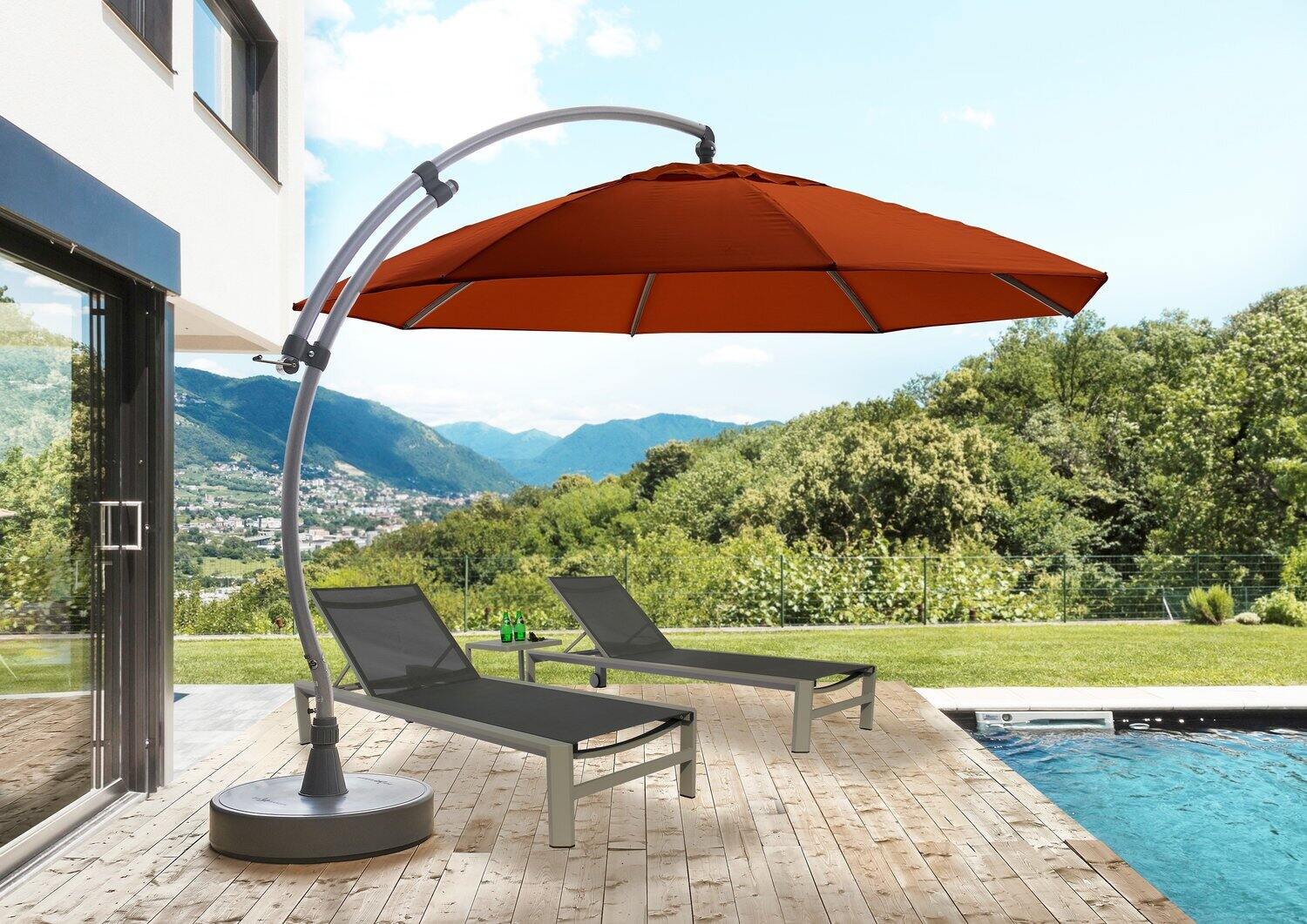

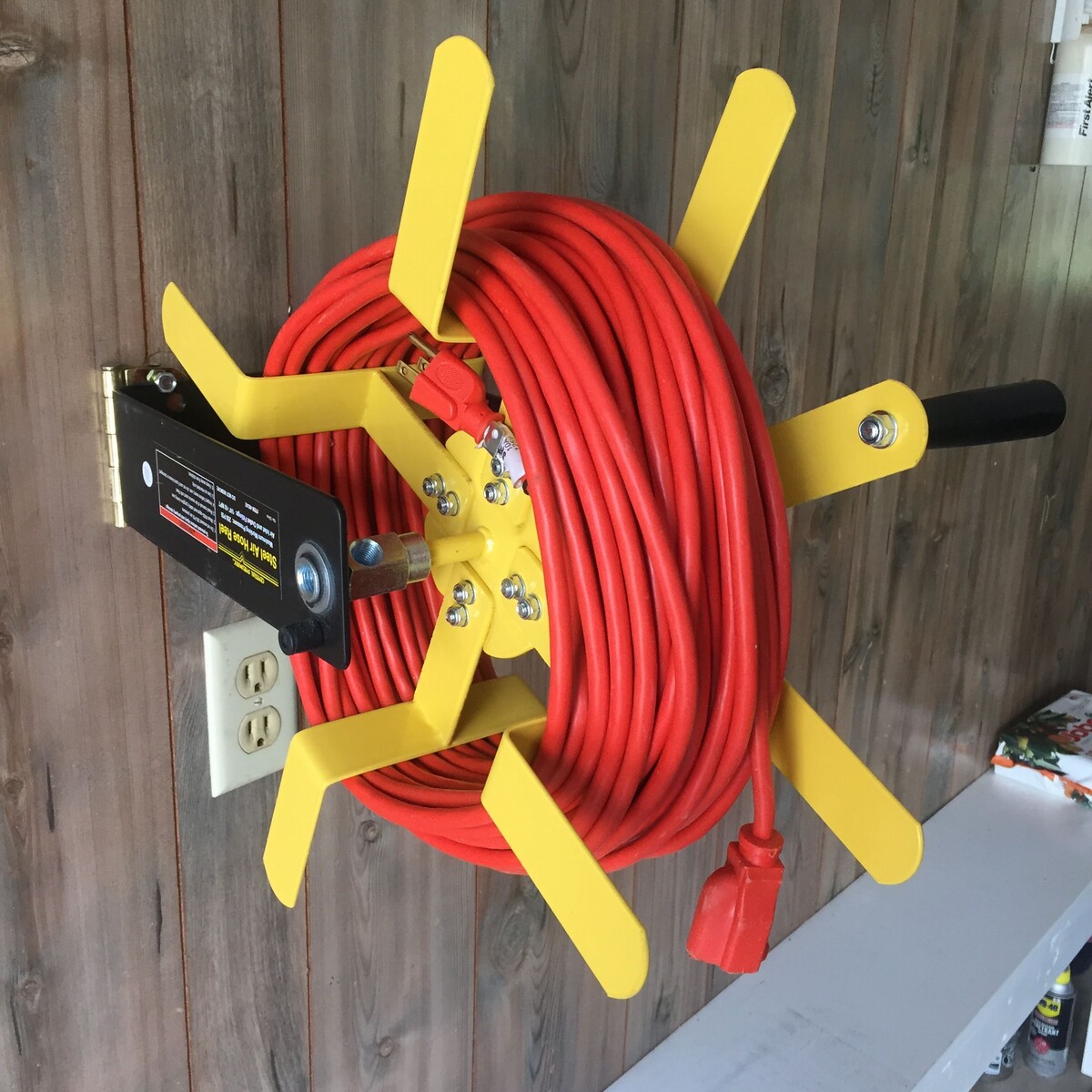



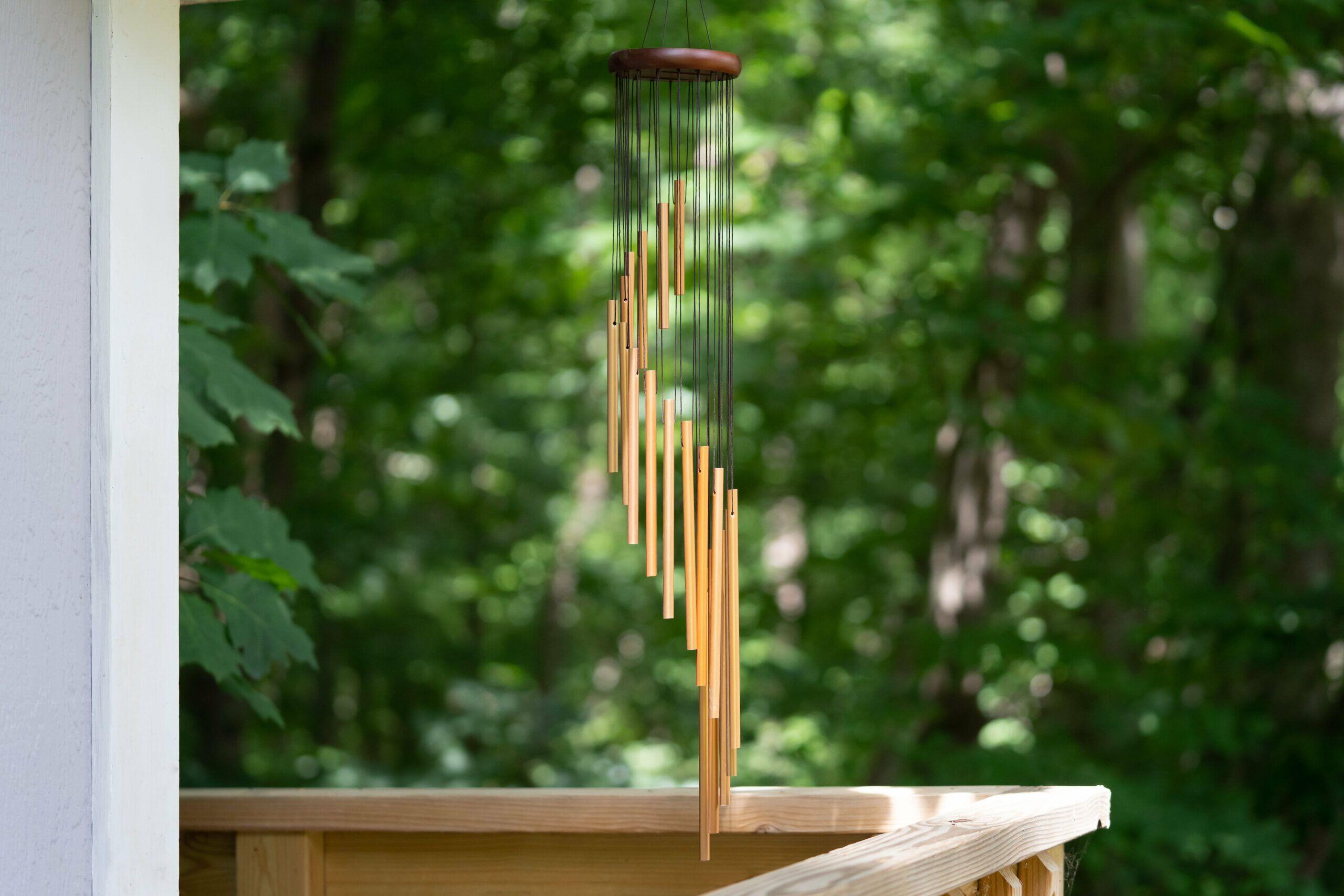

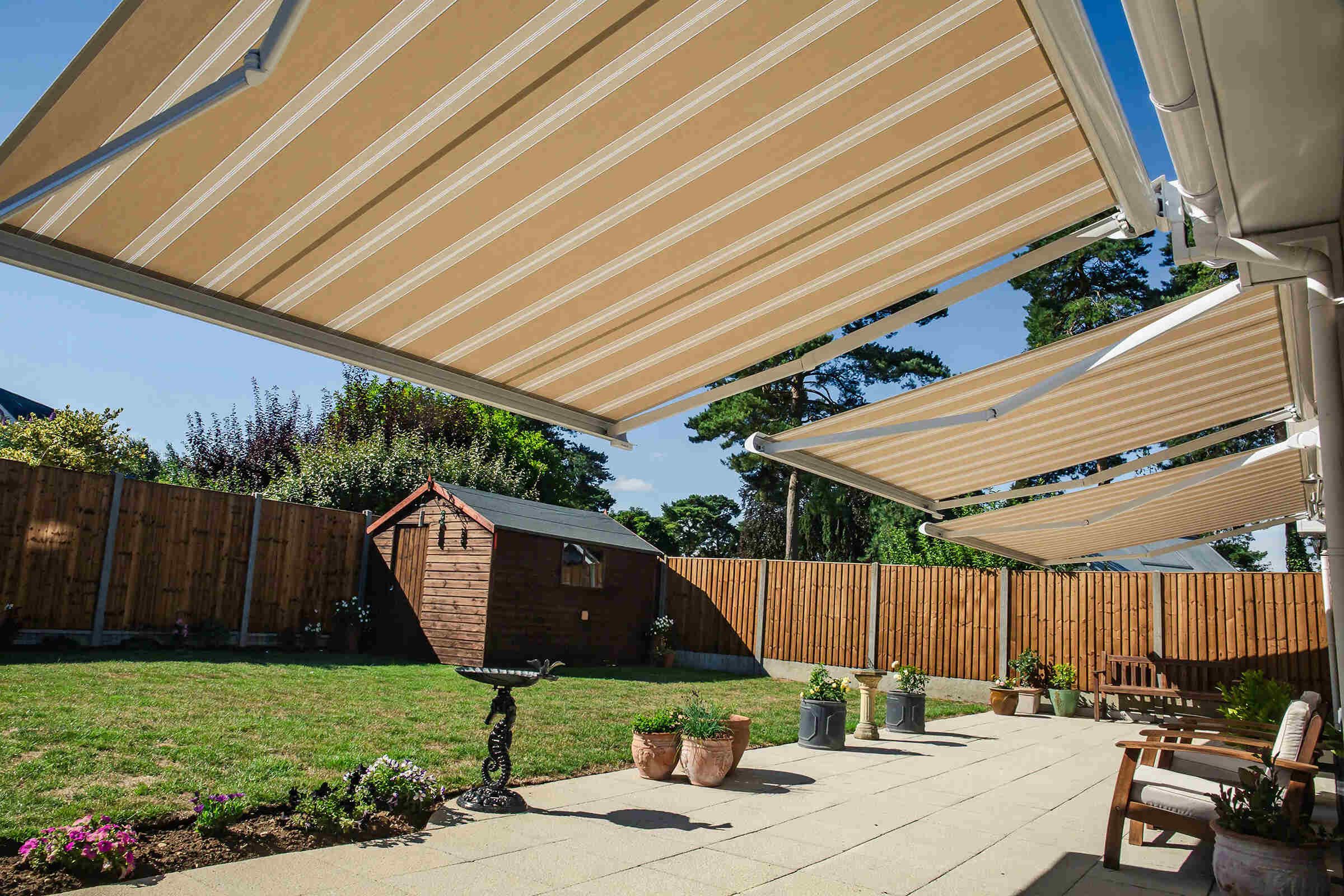




0 thoughts on “How To Block The Wind On A Patio”